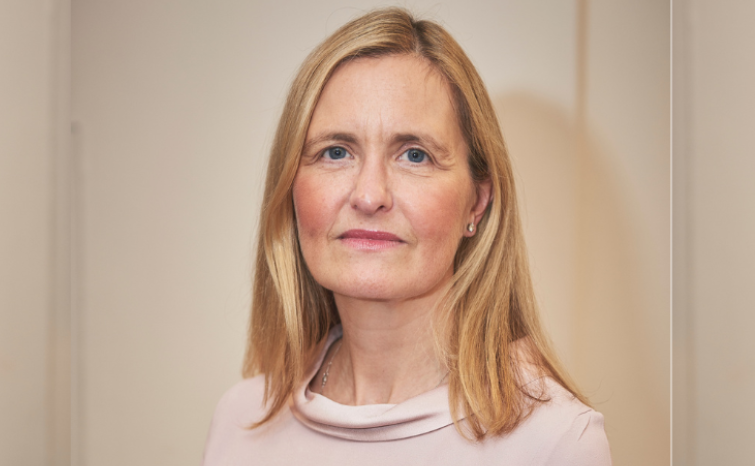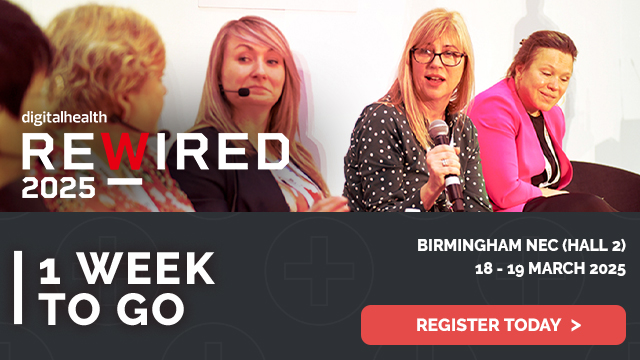List of accredited EPR suppliers published by NHSE and NHSX
- 5 August 2019

A list of accredited suppliers of electronic patient record solutions have been published by NHS England and NHSX.
The pair have developed a new section on the Health Systems Support Framework to help organisations and integrated care systems get best value for money when buying new digital services, software and infrastructure.
Eight companies have been placed on the framework’s Lot 1 list after they met a wide range of key criteria including ability to integrate with other IT systems.
The eight companies are:
- Allscripts
- Cerner
- DXC
- IMS Maxims
- Nervecentre
- Meditech
- TPP
- System C
Matthew Gould, CEO of NHSX, said: “Helping clinicians access and share data effectively is crucial for patient safety.
“Today’s announcement is about giving care providers the tools they need to achieve this, and a key part of our mission to ensure the NHS benefits from the very best digital services.”
According to NHS England and NHSX, all of the selected suppliers were asked to demonstrate not only how they would deliver enterprise wide solutions, but also how they could provide thinner deployments that provide a basis for modular solutions (with or without SMEs and other partners), how they would support the ideas set out in health secretary Matt Hancock’s “tech vision” and how they would interoperate with other systems to ensure that data is available to clinicians at the point of need and to support the creation of integrated Local Health and Care Records.
The Health Systems Support Framework was created to provide services that support the delivery of integrated care – including population health management – and the new EPR section will provide access to supplier systems able to meet the Global Digital Exemplars (GDE) standards.
Suppliers were starting to be added to the framework in September 2018.






17 Comments
Paul – Who are you? I’d like to understand where you are coming from. Do you have vested interest? I do, but a quick web search will allow people to assess my comments against in the light of these.
If you want some more recent evidence that not much has changed in the last 13 years have a look at these.
The first from Atul Gawande
https://www.newyorker.com/magazine/2018/11/12/why-doctors-hate-their-computers
And this from Bob Watcher
https://hbr.org/2018/03/to-combat-physician-burnout-and-improve-care-fix-the-electronic-health-record
Are they “willfully (sic) misrepresenting” the position?
However much Ewan might wish to question the evolution strategies of the EPR providers in England, please spare a thought for the NHS Boards in Wales still struggling with Myrddyn, an evolution from the Neanderthal man era.
Reading this list of comments, it is like apples and oranges, probably because Ewan used “technology” at the end of his original post. I would say “25 year old architecture”. So the vendors are correct when they say that they have introduced new technology into there products and Ewan is right when he says that these do not, necessarily, address the modernisation of the operation of the products.
Personally, I have seen a Trust implement some innovative working practices that that have benefitted the hospital and the patients where the PAS system could not deal with it. I have worked in projects where the Trust has had to find ways of changing their processes to fit the application – improvement or not. I have seen applications where the processes of the first hospital implementation are embedded in the database.
They may have had shiny new technology but this did not address the architectural issues the products have. Sometimes, in the 25 years, it would interesting to ask “If we were designing this application now, with our accumulated knowledge and the latest advances in technology and techniques, what would it look like?”
As I have found over many years, people say that applications “Evolve” but they rarely follow evolutionary principals. I.e. They may add new capabilities but legacy features that become unfit still survive.
in Scotland, we have a national contract with TRAKCare but they are not on the list. however, last week, this was announced – presumably after this list of 8 was compiled. how does this affect things. https://www.intersystems.com/uk/news-events/news/news-item/intersystems-makes-hl7-fhir-integration-components-free-to-nhs-customers/
So, EPIC isn’t on the list? Anyone know why?
I’d like to see a company like Better (nee Marand) onto this list, committed to a vendor neutral data standard (openEHR) and doing great and significant work both in and outside of the UK. Now that would bring a breath of fresh air into mix and shake things up.
Hi Ewan,
Honestly, MAXIMS Enterprise was built from the ground up as a true web product in 2006. Like others we have adapted and advanced, but we’ve enabled some of the very latest technologies today, some that we are using , MAXIMS M Health, and so that others can be enabled too. Whether that is trust solutions or commercial entities.
I think this gives much valued credit to my colleagues at IMS for their hard work over the last three decades, 33 years to be precise. We try to bring every piece of knowledge and experience forward with us everyday. But we also make it a policy to never switch off a client on our older solutions. Sometimes older solutions are still in use for a verity of reasons.
It’s not a perfect world, I would hope that we are all on the journey to make things better, not worse, and we want to see competition and advancement in the market place. We need to win new contracts and business to be able to grow our solutions and take advantage of generational shifts in new technologies.
I’m not sure that I read a solution or better suggestion in your comments, but always open to suggestions.
Best wishes
Shane
Just so i’m 100% clear here… you are quoting something written 13 years ago to support your position today?
A position that is being argued against by people who use the systems you are willfully misrepresenting?
Can I refer you all to the entry for Tuesday 20 June 2006 in Chapter two of Adam Kay great book “This is Going to Hurt” which starts:
“Tuesday, 20 June 2006 Our computer system has been upgraded and, as happens eleven times out of ten when the hospital tries to make life easier, they’ve made everything much more complicated. It certainly looks much whizzier (and less like an MS-DOS program from school), but they’ve not actually fixed any of the massive clunking problems with the software, they’ve just slapped an interface on top of it. It’s the equivalent of treating skin cancer by putting make-up over the lesion. Actually, it’s worse than that. This glossy interface uses so much of the exhausted system’s resources that it’s now slowed to a nearly unusable crawl. It’s like treating skin cancer with some make-up that the patient has an extreme allergic reaction to.”
This rant that continues for two pages says it all so much more eloquently than I can. I believe Adam was at Imperial in June 2006.
As well as this section,this book is essential reading for anyone in health. It starts, as those of you who know Adam from the satirical band “The Amateur Transplants” might expect, as a hysterically funny tale of unlikely things in body cavities and even more unlikely excuses as to how they got there, but ends as a very dark story about what’s wrong with the way we treat junior doctors and Adam’s decision to leave medicine. Sadly giving them crap IT is the least of it.
A
I don’t doubt these solution are continually improving. just as gas lighting was continually improving in the 1870s, but what we need is electric light.
No doubt Joe McDonald will remind us that electric street lighting first appeared in Newcastle, shame the GNCR is still running on gas.
Not sure about all the systems coming from the last 25 years but the requirements could have been implemented at least 20 years ago.
I should add, I think, the scope of Lot 1 makes few actual technical requirements which can lead to quality issues. E.g. OpenAPI, you could produce an openAPI but use tech standards from 00’s and not return anything useful. Real time feeds? Are we talking about NHS Digital/England/X standards (00’s or modern) and/or HL7v2 (90’s – I have no problem with this though) used in trusts??
On transfer of care, I think this does strongly hint at a tech standard and would read a lot better if it actually stated the standard (NHS Digital Transfer of Care).
On Coding, it suggests SNOMED but didn’t we have that in the 00’s. Should this be pushed a litle more strongly these days?
Similar on business process, not easy to recognise standard processes but then again we’ve not defined them as well as the US (and others) have done in IHE.
Understand documentation needs to be for a non techie audience but if we’re describing tech surely it makes sense to have a technical and business descriptions using commonly understood terminology?
Ewan
Evolution comes with adaptation. Definatly those solution providers would not be on the list if they were not continuously improving. List better digital solutions
Bit light on mental health and community EPRs? Especially given how explicit they are that HSSF Lot 1 is “for Acute, Community and Mental Health Hospitals”.
And if interoperability is king then a bit surprised that a couple of them made the list.
Not in there fundamental archetecure and technology
Would respectfully challenge the concept on dated solutions or lipstick on a pig. MEDITECH understands and appreciates the need for a modernized, contemporary solution that addresses the needs of today’s customer and healthcare paradigm. Re-writing systems from the ground up is a core element to our philosophy. It is Imperative that systems today, reflect the high expectations of clinicians on intuitive usability, easy navigation, include tight integration across care delivery environments and reflect positive patient/consumer experience. Agree that these (among other factors) are paramount to success in the market today. We are excited to be participating in the framework and the discussion with our UK customers and partners.
Being originally designed x years ago doesn’t mean that they released the solution and stopped.
These products have developed as new technology has emerged.
Correct me if I’m wrong, but I think in all cases the main product from each of these vendors was originally designed in the last century. Well into the last century In most cases. Before the Internet was obiqutious, before the smart phone was a twinkle in Steve Jobs eye, before Cloud and before. micoservice archetecures. They may have had a bit of a makeover, but it is lipstick on a pig.
We are not going to transform digital health with 25 year old technology.
Comments are closed.